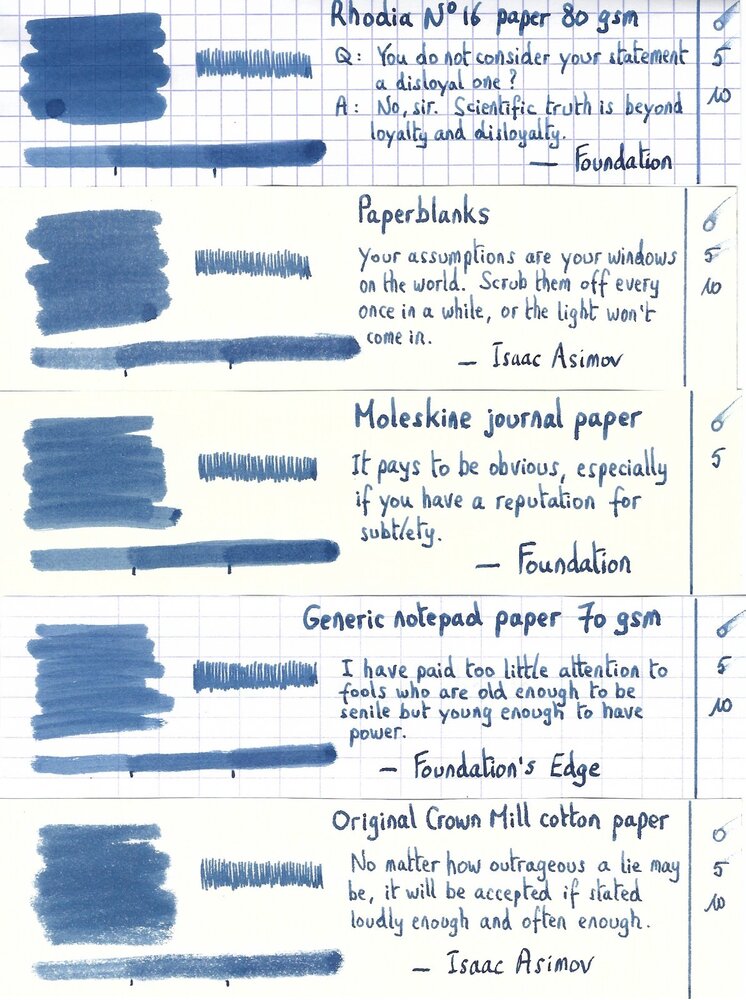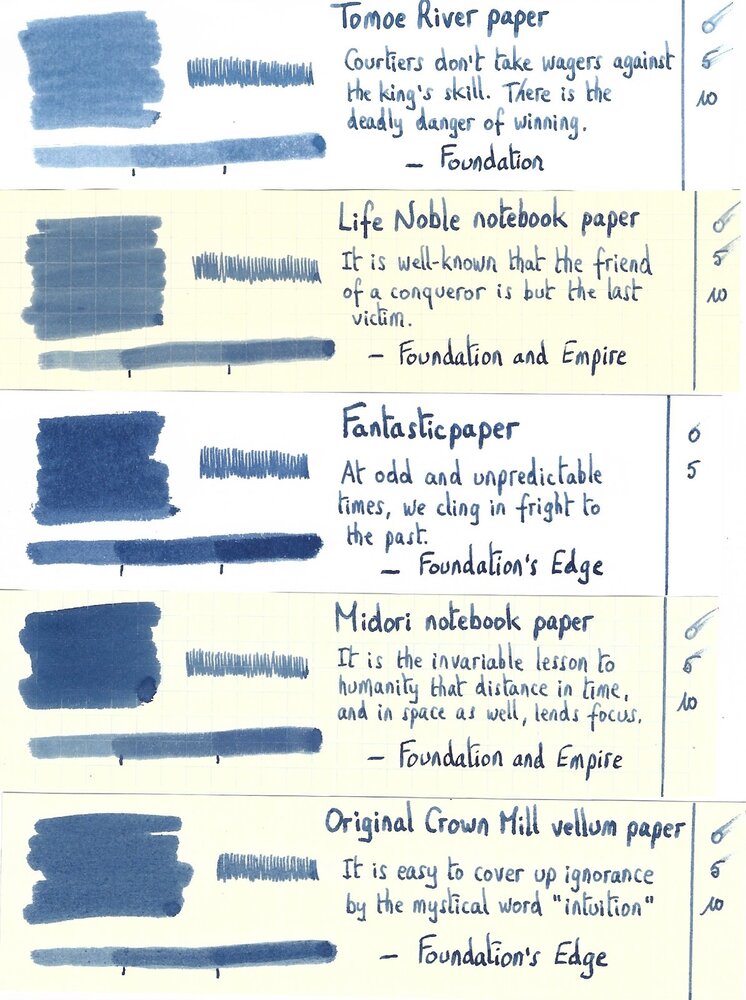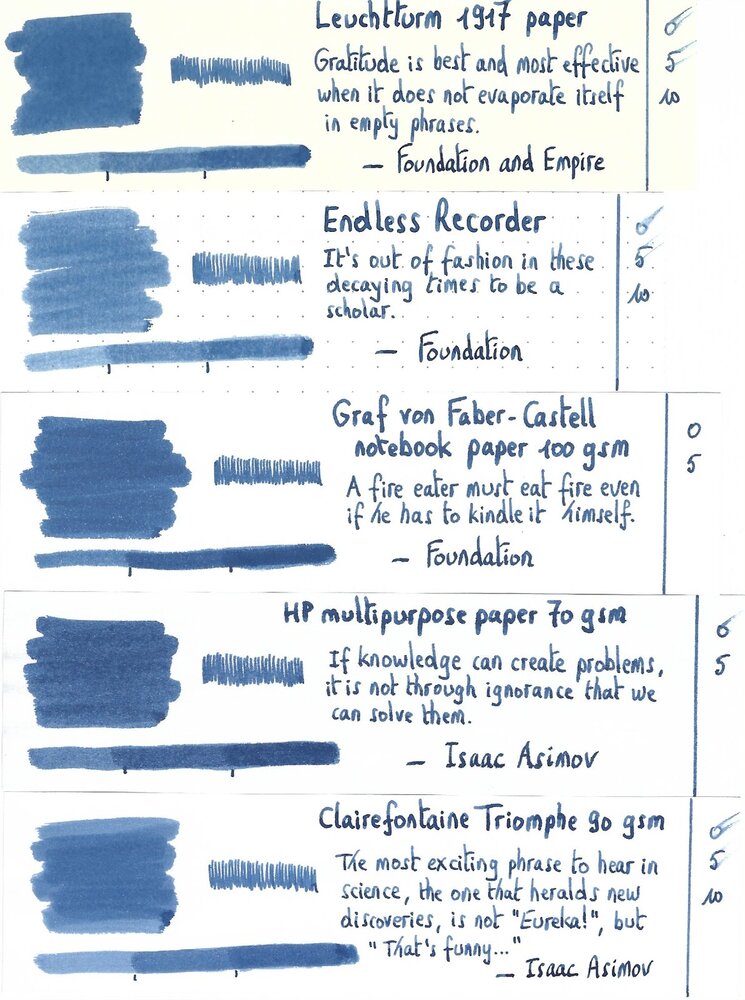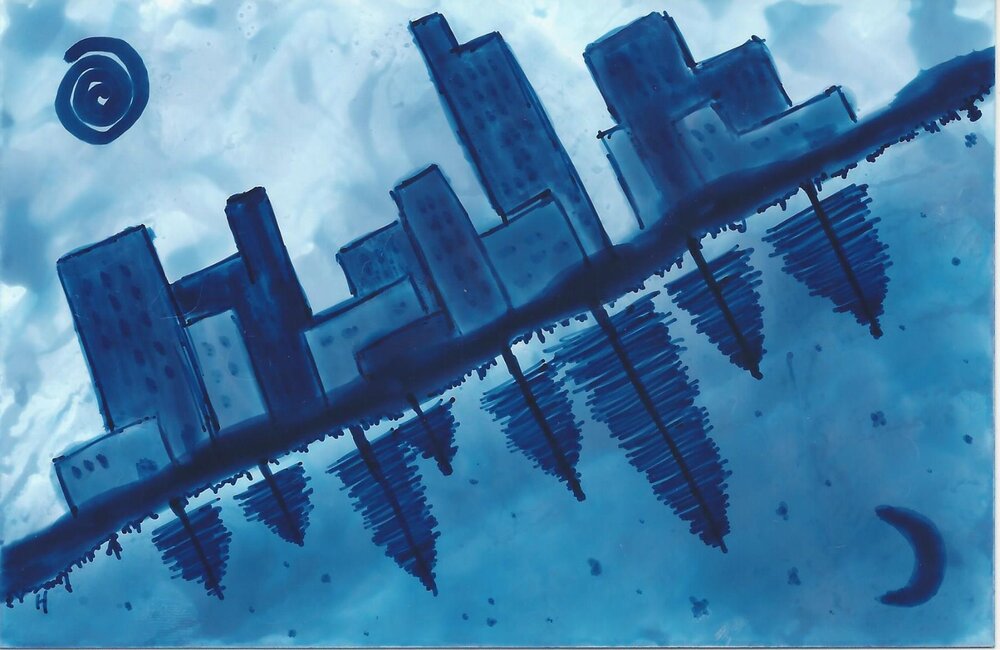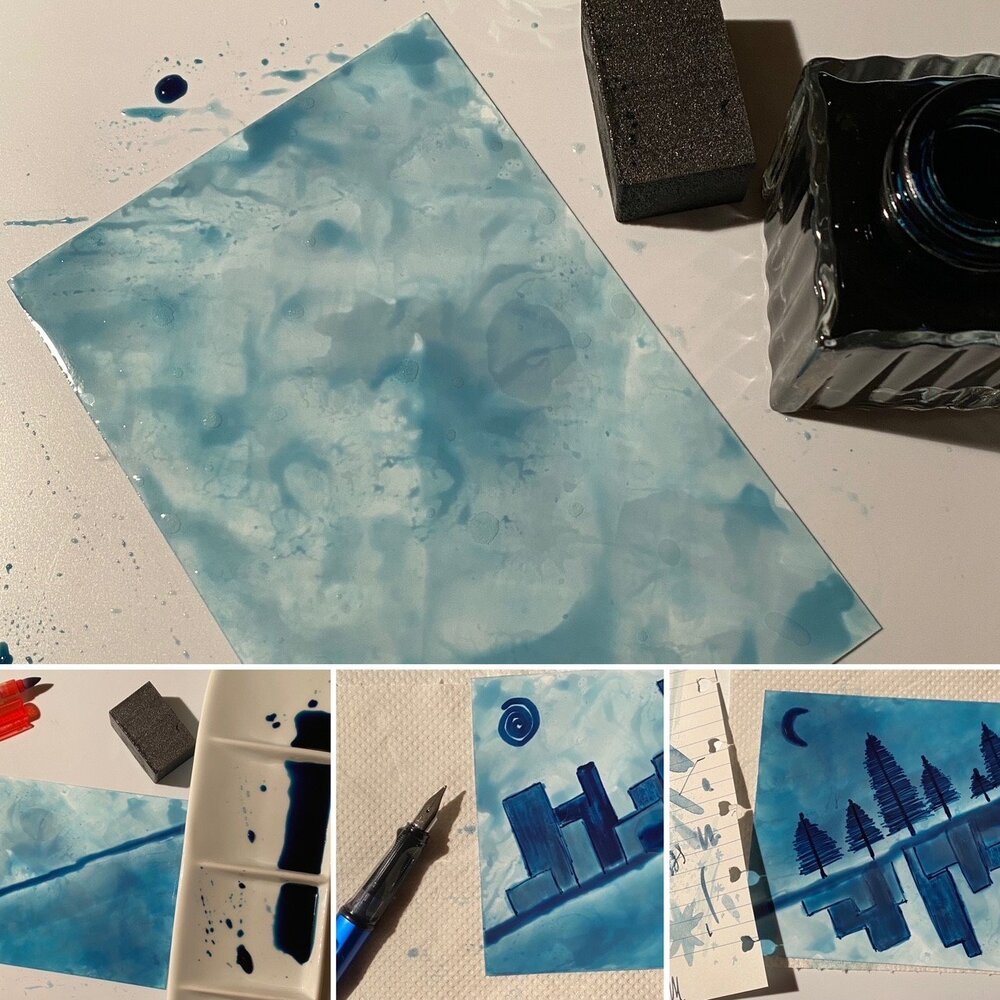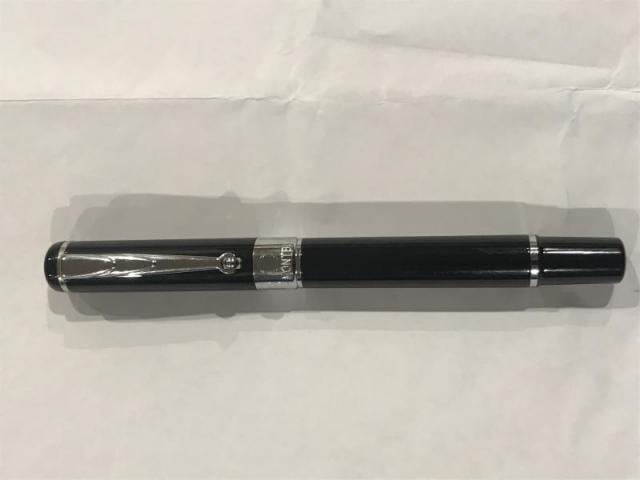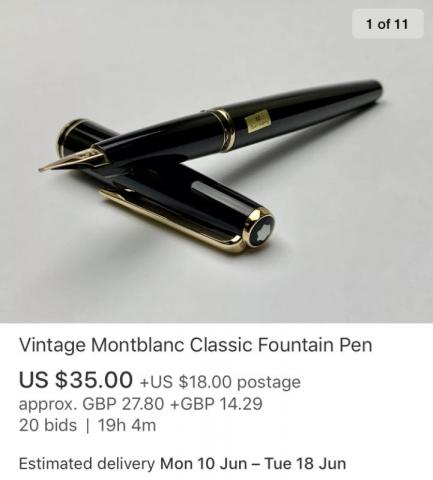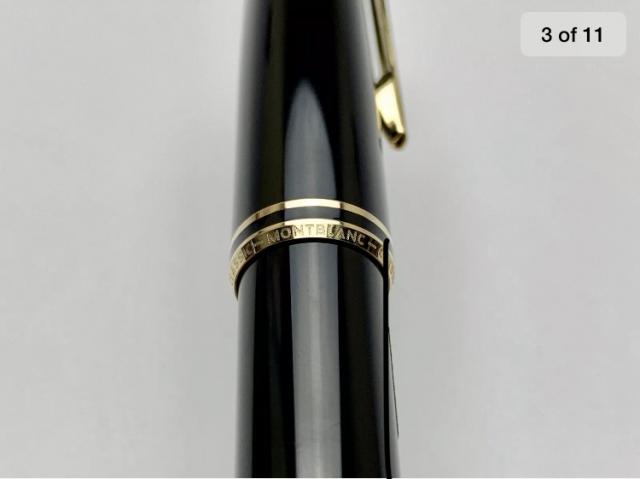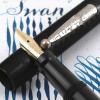Search the Community
Showing results for tags 'mont blanc'.
-
Hi All! I am a student who wrote with the same FP for many years. However, I wanted something new, so I decided to trade pens so that I could afford it and switch pens more often. I recently bought two Montblancs 144s. The price was good, but I have a few questions regarding the age, nib size and se...
- 8 replies
-
- montblanc
- mont blanc
-
(and 7 more)
Tagged with:
-

What Are The Best Ballpoint Pens? Share Your Thoughts!
theodore94 posted a topic in It Writes, But It Is Not A Fountain Pen ....
Hi Everyone, I'm new to FPN and pen collecting in general. I am particularly interested in ballpoint pens... I'm a full-time student and I do most of my work in ballpoint. I have a few pens that I've bought used, and I want to know what you think are the best ballpoints you have purchased/used....- 227 replies
-
Help identifying if there is problem with nib on hard-starting Mont Blanc.
ihatehardstarting posted a topic in Of Nibs & Tines
Hello, I have recently discovered an old Mont Blanc Unicef fountain pen. It was unused for a relatively long time so I flushed it with water. However, when I tried it afterwards, it had major hard-starting issues. I thought that maybe there was still some dried ink in the feed so I flush... -
Mont Blanc - Petrol Blue For the past few years, Mont Blanc has followed the tradition of bringing out a Limited Edition "Colour of the Year" ink. These come in a 50 ml square bottle, and are typically available for a limited time only. In this review, I take a closer look at Petrol Blue, the co...
- 46 replies
-
- mont blanc
- petrol blue
-
(and 2 more)
Tagged with:
-
Mont Blanc - Swan Illusion Plume When Mont Blanc brings out a new pen, you can be sure that there is an LE ink to accompany it. With the MB Patron of Art Ludwig II pen comes the mysteriously sounding "Swan Illusion" accompanying ink. A bit of digging on Wikipedia removes the mystery though: Ludwig...
- 77 replies
-
- mont blanc
- swan illusion
-
(and 2 more)
Tagged with:
-
I just received a Mont Blanc Starwalker pen through the post and thought I would share the experience. My first impressions were what a good looking pen it is with its platinum metalwork and you would be hard pushed to know it was secondhand. I wasn't expecting it to be inked...
-
The brown ink from shipping made the sample label unreadable, I thought, but I have finally determined that the ink inside is MB Honore du Balzac. The se BJ page is in an Endless Notebook, the ink writes slightly wetter there (better and thicker paper). @amberleadavisplease move this...
- 4 replies
-
- mont blanc
- honore du balzac
-
(and 3 more)
Tagged with:
-
InkShift – Mont Blanc Lavender Purple to Royal Blue Just for the fun of it, I occasionally resume my project exploring what happens when you move progressively from one ink colour to another. For now, I'm restricting myself to inks from the same manufacturer - mainly to avoid nasty chemical su...
- 7 replies
-
- inkshift
- mont blanc
-
(and 2 more)
Tagged with:
-

Ink Shoot-Out : Kyo-Iro Stone Road Of Gion Vs Mont Blanc Swan Illusion Plume
namrehsnoom posted a topic in Ink Comparisons
Ink Shoot-Out : kyo-iro Stone Road of Gion vs Mont Blanc Swan Illusion Plume In 2018, Mont Blanc presented us with the Swan Illusion Plume ink, that accompanies the Patron of Arts Ludwig II limited edition pen. A great grey-brown ink that I highly recommend. Fellow member JulieParadise suggested S...- 30 replies
-
- kyo-iro
- stone road of gion
-
(and 3 more)
Tagged with:
-
Mont Blanc – StarWalker Blue Planet The 2020 Mont Blanc StarWalker Blue Planet fountain pen pays homage to our home in the universe, and calls attention to the dark blue water in earth’s oceans. Not surprisingly, Mont Blanc also released an accompanying dark blue ink, that is the subject...
- 9 replies
-
- mont blanc
- starwalker
-
(and 3 more)
Tagged with:
-

Ink Shoot-Out : Mont Blanc Burgundy Red Vs Papier Plume Red Beans And Rice
namrehsnoom posted a topic in Ink Comparisons
Ink Shoot-Out : Mont Blanc Burgundy Red vs Papier Plume Red Beans and Rice The other day I was playing around with Mont Blanc Burgundy Red, enjoying the ink a lot. I just love these toned down colours that move towards pastel territory, and this ink fits the bill. This definitely is NOT a bright...- 6 replies
-
- ink shoot-out
- mont blanc
-
(and 3 more)
Tagged with:
-
Mont Blanc - Jungle Green (Writer's Edition 2019 - Homage to R. Kipling) The 2019 Mont Blanc Writer's Edition pen pays homage to Rudyard Kipling, the English author who's probably most remembered for his tales centering on Mowgli and the wolf pack. But Kipling was also a poet, best known for the...
- 8 replies
-
- mont blanc
- writers edition
-
(and 2 more)
Tagged with:
-

Mont Blanc 149 Meisterstück With Leaking Barrel (Split Barrel)
mcmahonsport posted a topic in Repair Q&A
My Meisterstück leaks where the barrel splits. How easy is it to seal this with beeswax, is it simple to separate? The red arrow shows the leak.- 22 replies
-
- leak
- mont blanc
-
(and 2 more)
Tagged with:
-
I was wondering if the nib of AH is equal to nib of 146 or 149. (in my knowledge, very few pens have 149 size nibs in montblanc...like the Hemmingway and dumas ) so it is a shout out to all the members to post some comparative shots (comparing nib size, width, height with and without cap etc) of b...
- 19 replies
-
- mont blanc
- alfred
-
(and 2 more)
Tagged with:
-
Hello Mont Blanc aficionados, I have been given a 2nd hand Mont Blanc and would love to know what model it is etc so thought what better place to find out than the Fountain Pen Network. I have attached photos which I hope are enough to identify it. Any help Kindly appreciated. Thanks, Rico
-
So I have had a Waterman Hemisphere and I have used it for the last 5 years since year 9 (UK) and my GCSEs and now I am in the middle of my A-levels. I dont know if it just me but I feel like there is way to much centennial value in the pen so I dont want to take it to uni and lose it. I need a new...
-
Mont Blanc - Web Grey (Heritage Spider Metamorphosis) When Mont Blanc brings out a new pen, you can be sure that there is an LE ink to accompany it. With the MB Heritage Spider pen release comes the accompanying Limited Edition ink "Web Grey". The grey colour of the ink is inspired by the silvery...
- 16 replies
-
- mont blanc
- web grey
-
(and 1 more)
Tagged with:
-
Hi! I'm quite new to collecting pens, but trying to learn as much as I can. I've recently inherited a couple Mont Blanc fountain pens, and I'm having some issues with one of them - a 342. It's been working just fine for the last 6 months, but recently when I tried to unscrew the cap, the grippi...
- 7 replies
-
- mont blanc
- 342
-
(and 3 more)
Tagged with:
-
Mont Blanc - Velvet Red When Mont Blanc brings out a new pen, you can be sure that there is an LE ink in its wake. Accompanying the release of the MB Writer's Edition William Shakespeare pen in 2016, came the aptly named corresponding LE ink "Velvet Red". This ink is probably difficult to find...
- 11 replies
-
- mont blanc
- velvet red
-
(and 2 more)
Tagged with:
-
Hello, I am looking for advice on repairing the broken psiton rod that came with this Monte Rosa. I am not sure I will be able to find a replacement and the rubber seal appears to in very good shape still. It is broken and has chucks missing in the upper section so if I twist the piston all the way...
- 3 replies
-
- mont blanc
- monte rosa
-
(and 2 more)
Tagged with:
-
Hi, I take it "Alimentador" just means ink feeder in the world of Mont Blanc 149 fountain pens? I've noticed that 149's can come with a variety of feeders and I'm wondering what that's all about. Do some deliver ink to the tip better than others? Another thing is the ebonite feeder as oppos...
- 4 replies
-
- mont blanc
- feeder
-
(and 2 more)
Tagged with:
-
I recently acquired this Mont Blanc Meisterstück from a family member and have no true interest in keeping it. If anyone has any idea of the model, year, price and where to sell I would greatly appreciate it. Around the top of the pen labels XY2006108 Metal GERMANY And near the bottom MONT BLANC - M...
- 2 replies
-
- mont blanc
- meisterstück
-
(and 3 more)
Tagged with:
-
Wanted to give a brief report on the LeGrand Blue Hour with OM nib for which I waited patiently for almost six months. I inked it with Blue Hour ink and used it at work yesterday. The pen is much heavier than a 149 and just as long, but the OM nib is excellent, and the ink matches the color of the p...
- 2 replies
-
- mont blanc
- blue hour
-
(and 1 more)
Tagged with:
-
This looks ok to me, but I don't have the eye that many of you do, so would be grateful for your opinions on this Tribute to the Mont Blanc please. The last photo shows the stars on a Jungle Eyes Mozart (MoP), the Tribute (Quartz) and a 146. Thank you!
-
I am cleaning my Mont Blanc 145 and I saw on a Mont Blanc video that it appears you need a mont blanc tool to remove the nib and feed. I think I got it pretty clean just by flushing warm water through it many times. (I haven't used it in years and didn't clean it before I put it down-- I know better...














